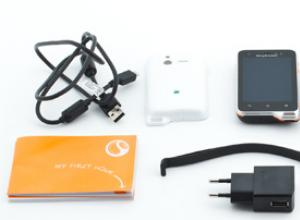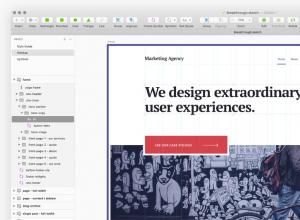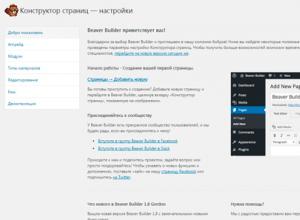What traffic sources are significant. Traffic sources or where to advertise affiliate programs? #3 - Youtube Semi-Search
Good afternoon dear friends!
So, the topic of our today's podcast is "Traffic Sources", but before delving into these "junk", I would like to thank in advance those who took part in a recent survey and answered the most important question for me " Articles on what topics would you like to see on this blog? ". Thanks everyone for the replies.
Now I clearly know what topics would be of interest to you and what exactly to write about on the blog. Although there are quite a few. These are affiliate programs (classic), Yandex Direct, binary options, copywriting, blog promotion, creating a mailing list, a subscription base, and the most pressing issue, in my opinion, is mining. That is, the topics are quite popular and partly familiar to me from experience. Well, we will work in these directions.
So, continuing this story...
… I haven't written for a long time. Not that he was lazy. There's just been a lot of things. This is coaching. And advertising campaigns to promote partner courses. And preparations for the launch of the Academy of Winners, which will be tomorrow. And a personal life that no one has canceled 🙂
But be that as it may, I found a couple of hours to scribble a couple of lines ...
So, as I already noted, the topic of today's article " Traffic sources"And at the beginning of this post I would like to immediately draw attention to the fact that this is a very important point for those who want to. What I mean is that if you know where to get high-quality traffic from and where to direct it correctly, you can always earn.
Where to get this one for selling affiliate products or services, we'll talk today.
But in more detail about each type of traffic and how to correlate traffic, that is, on which platform which affiliate products should be advertised and which not, we will talk in the following articles.
It's just sometimes painful to see how newbies make mistakes and lose money when buying traffic. We'll fix this. I am sure that this article and subsequent podcasts dedicated to the extraction of targeted traffic for affiliate sales will help you. At least I will try to keep it that way.
I advise you in advance and be among the first to know about the release of new articles.
Main sources of Internet traffic
- Social media
- Search engines
- contextual advertising
- banner advertising
- Teaser ads (classic, popunders, clickanders, etc.)
- Video advertising (video hosting)
- Viral advertising (mixed)
- Forums
- Website traffic
- Catalogs
- Mailing lists (E-mail marketing)
- Purchased traffic (surfing services, boxes, etc.)
- Etc.
Traffic sources for affiliate advertising
Despite the abundance of various sources of Internet traffic, we can say with confidence that not all of them are suitable for advertising partner products and services. Why? It's very simple - to advertise affiliate programs, we need HIGH-QUALITY AND TARGETED TRAFFIC, which some of the above-mentioned "comrades" cannot give us.
1) Search traffic
4) Article marketing (traffic from websites)
So to say "Golden Seven". I use these methods myself. Some more, some less. But, nevertheless, I can say with confidence that these sources of Internet traffic are very effective. Of course, provided that you use them correctly. Key word - CORRECT .
Agree, you first need to learn how to work with contextual advertising before launching your first advertising campaign on Yandex Direct or Google Adwords. The same is true with teaser, banner ads and other traffic sources on the Internet.
I know that it is very difficult for beginners who want to make money on affiliate programs, since it is impossible to study everything at once. This is not necessary. Focus on learning one traffic source first. Let's say contextual advertising. Or email marketing. Then apply the acquired knowledge in practice, test and look at the results. If it does not work, analyze, correct. And you try again. Until it starts to work.
At the stage of study and testing, you can easily find people who understand this topic and consult with them. Often this can be done for free. Or for a review on his website. Or for some other nice trifle 🙂
In general, in order to make money on affiliate programs, you do not need to know and apply all these 7 traffic sources.
Two or three is enough. Or even one traffic source. For example, a lot of people make money on the Internet only with the help of search traffic (their sites). Or only with the help of their mailings and subscription base (E-mail marketing).
If you put yourself in the place of a beginner, then I would boldly choose 3 types of traffic - that is, my mailing lists, and search traffic (creating your site for affiliate products).
***********************************************************************************************
At the end of the article, I would like to turn to you, dear friend! And ask:
And what traffic sources do you use to make money on affiliate products and services? If you are not using it yet, which ones would you like to use and why did this particular source of Internet traffic attract you?
I look forward to your responses in the comments below.
Finally…
So, in this article, we briefly talked about 7 sources of traffic on the Internet that you can use to make money on affiliate programs.
In the following articles, I will talk about each of these traffic sources in more detail, so that you have a clear idea of which traffic acquisition channel you can use. so you don't miss articles.
If the article turned out to be useful for you, then recommend it to your friends on social networks. Thank you in advance...
That's all. We'll see you very soon. I promise you won't get bored.
And for a snack, a little video. Just to cheer you up. Smile 🙂
Have a nice day!
Sincerely, Your friend and assistant
Internet traffic is nothing more than the sum of all visitors to a web resource. To date, everything is arranged in such a way that traffic is the key to the profitability of the project. Different traffic can bring different money, but one thing remains the same: you always need more of it than you have at the moment. We will try to cover the topic of traffic in as much detail as possible, answering all the main questions that beginner webmasters have about traffic.
Traffic sources
You can't create traffic out of nothing, just like you can't just print money. Visitors need to be attracted from other, larger sources that have already won their own audience. Let's find out what traffic sources exist today:
- search engines;
- social media;
- mobile messengers;
- bookmarks in the browser;
- portals and forums;
- offline advertising;
- online advertising;
- other sources.
It is noteworthy that you need to decide on a way to further monetize your project on the Internet in order to choose the necessary traffic growth strategy. If you plan to make money from sales, then any source of traffic, including advertising, is fine for you. But for content platforms, this is not profitable, because their business model involves making money on the sale of advertising, and reselling traffic at a higher price is a completely different story. Therefore, we will first look at free traffic sources.
How to get visitors for free
An Internet user can go from one web resource to another using the found link, or using a search engine. Both options offer an abundance of free ways to get traffic. Next, we will give basic examples of getting traffic from the largest sources:
- Search engines. To get to the top of search results, the easiest way is to choose a special semantic core of search queries. For these requests, it will be necessary to write articles that will target a specific keyword.
- Social ones like Vkontakte and Facebook allow you to create public interest groups. By filling these groups with interesting content and leaving a link to it in other publics, you can gain subscribers, who can then be turned into an audience for your portal.
- Messengers for mobile devices support the chatbot function. You can create some kind of bot with unusual answers, and people will send each other links to it. This way you will get an audience that can then be converted into traffic to your resource.
- If you already have high traffic numbers from various sources, work on getting people to bookmark your site and visit it regularly.
- Portals of interest, like "Peekaboo" or "Habrahabr", have a fairly solvent audience. If you establish yourself there, you can discreetly advertise your site or product.
- People still go outside and look at the billboards. This method of advertising works well on a large scale advertising budget.
- Online advertising has many varieties, and it is better to entrust it to a professional, explaining your goals and objectives in detail.

New traffic sources
A new source of traffic for your portal can be, for example, traffic from mobile applications.
Visitors to an online store can be attracted using utilities like Yandex.Market, which show the user the stores with the lowest prices. If you don't want or can't lower prices, just change the number on the site, and when communicating with the client by phone, try to explain to him that the price is slightly higher than indicated on the site. Many customers do not want to look for a store again and agree to the purchase. You can also use upselling (upselling) for clients from such utilities.

Although news aggregators are as old as the world, many webmasters still underestimate their importance. If you add your newsfeed to a sufficient number of aggregators, then you can get most of the traffic only from them. After all, people want to read the news in one place, and not run around the Internet looking for a little note.
contextual advertising
In some commercial niches, there is almost no hope of breaking into the top search results, so contextual advertising becomes an uncompromising option. Setting the context is an art for those who do it. It is necessary to go through huge lists of keywords, filtering the necessary ones into the white list, and pick up negative keywords. Then you need to target the audience, select promotional materials, conduct tests, and much more. In a word, it is better to delegate an advertising campaign to a knowledgeable person, or better to an advertising agency. After all, then you will have a constant connection with the performer and the confidence that tomorrow the traffic channel will not be closed, and you will continue to receive the necessary volumes of visitors to the site.
A similar system of work also has teaser advertising and targeting in social networks. If you want to get customers or traffic profitably, be ready to work on the parameters of your advertising campaign.
How to find out a competitor's traffic sources
The easiest to understand and popular service is Similarweb.com.
This service allows you to find out the approximate volume of the monthly audience, traffic affiliation by country and traffic source, referrals and social involvement. Similarweb is useful for a rough estimate of a competitor, but its numbers tend to be quite inaccurate. You can check this by analyzing your website with it.
Sometimes on the site you can find a Live Internet statistics counter that is not password protected. In this case, you can view the statistics of such a resource without any problems. But such luck comes across very rarely, because no one wants to show keywords and pages that get the most traffic.
The following services can also help with the task of learning more about the sources of other people's traffic:
- Alexa.com;
- Compete.com;
- Semrush.com;
- Quantcast.com.
In addition to these standard services, there is a chance that the site you are interested in is now being sold to the Telderi.ru site exchange. Then you can just write to the seller and get all the necessary statistics without the obligation to purchase.
How to analyze received traffic
In order not to invent a bicycle, try Yandex.Metrica statistics services, or you can use Google Analytics as a service for analyzing traffic sources. Both tools are quite powerful and allow you to track complex targets, set utm tags, and more.
"Yandex.Metrika" has a more user-friendly interface, which allows the site owner to independently deal with the necessary statistics, make a slice of data, report on certain dates and indicators, etc. But the service from Google is more integrated with its contextual advertising Ad words.

Target traffic source
The Google Analytics statistics service provides goal setting functionality. The goal in this sense can be any action aimed at achieving conversion. This can be placing an order, registering on the site, making a repost, and so on. Properly chosen goals make it possible to adequately evaluate the statistics in the future and get a truly representative sample; without setting up a system of goals, it is difficult to talk about a correct assessment of the effectiveness of an Internet business.
Goals are implemented at the presentation level and can be defined as the screens or pages viewed by visitors, or a certain number of them. The goal may have a monetary value. In this case, the conversion rate will be disaggregated by the value of each conversion, which will allow you to pay attention to the really important types. This can be, for example, the maximum or minimum transaction amount on the site.
There are 5 types of goals, which we list below in the table.

How to set goals in Google Analytics
To add a new goal in Google Analytics, you need to go to the admin panel, then the goal section - "Add goal". Next, follow the instructions:
- Specify the name and type. The goal can be, for example, the page that will open in the browser after placing a purchase order, or subscribing to an email newsletter.
- You must specify the URL of the target page. If necessary, you can assign a path to the target action and the value of this conversion.
- Create a target.
You can view reports on conversions and effectiveness in the "Conversions" section by selecting the "Goals" sub-item there. Here we will find information about the goals achieved and the conversion rate, and information about the value of the goals in monetary terms will also be available. Menu "Map Goals" provide you with data in graphical form.
The "Traffic Sources - Ad Words" section allows you to track the effectiveness of advertising by ad groups, campaigns, keywords, search queries.
Direct entries
The source of direct traffic raises a lot of questions among users of statistics from Google. The word direct in translation from English means "direct", in the context of attendance, this is a visitor who directly came to your site, that is, from bookmarks.

The direct visits indicator can accurately reflect the quality of offline advertising of a resource, provided that you use it. If not, then even better, then these are your deserved regular readers.
Traffic source analysis
Traffic source analysis involves working closely with Google Analytics.
We will talk about the report, which is often used in the analysis. Open it by selecting "Traffic sources" in the menu, and then select "All traffic". The first thing that catches your eye is a graph of the total number of transitions, distributed by day, as well as information about sources.
For a detailed analysis, click on the source, selecting it from the general list. Now you will be able to analyze in detail a particular traffic source in order to study things that are not visible on the overall graph. Let's use the filter by an additional parameter.

Don't risk money
Statistics is an independent scientific discipline that has many pitfalls when intuitively clear things should in fact be interpreted differently than we think. Therefore, the more money you spend on paid traffic channels, the more you risk misinterpreting the data of the statistical sample. Therefore, it is better to outsource such activities to professionals.
Attributions help to determine the main source of transition to the site by targeted actions of the audience - purchase, application, subscription, etc.
In this article, you will learn what attribution models Yandex.Metrica offers and how to evaluate advertising channels using it.
What's new in Yandex.Metrica
Users visit the site, as a rule, more than once: by a contextual ad, by search results, by an address in a browser line, through social networks, etc. Before taking a targeted action, they study the offer, product features, customer reviews.
Your task is to identify which path the visitor takes and which visits are valuable.
In December 2014, Yandex introduced the last significant click model. It analyzes the behavior of the audience in real time and helps to calculate the conversion more accurately.
Attributions are available not only in source reports for the "Traffic source (detailed)" and "Traffic source" groupings. You can apply them to advanced reports for Yandex.Direct and to traffic with From, UTM, and Openstat tags:
This is an opportunity to easily identify the site, ad and advertising campaign that brought visitors for the first time.
Model overview
Last transition
For each visit, Metrica determines the source:

In the example, users visited the site 3 times from different channels:

It is useful to apply this algorithm to detect pages without a counter code.
Minus - it does not take into account the history of visits, and therefore does not show the entire conversion path. At the same time, the number of touches with the brand has a positive effect on the readiness to purchase or order.
In the remaining two models, the Yandex team took this into account.
First transition
A typical situation: a visitor takes a long time to make a purchase decision (delayed conversion) and during this time returns several times from other traffic sources.
The algorithm of the first interaction uses the history of visits. The main transition is the first visit. All subsequent summed up to it:

For example, a user wanted to buy a product after opening an ad, but after that he also searched for information about it on Google and the company's social media account:

Last significant transition

We add clicks from secondary sources to the significant previous one. This helps to evaluate its effectiveness in detail.
Example: the sources of the first two visits - advertising and search - are significant:

The third visit on a direct call is insignificant. Therefore, all visits are attributed to the second - the last significant one in this chain:

The model also works for sites with fast conversion (performing a targeted action in one visit).
How to apply attribution models in Yandex.Metrica
Open the standard report "Sources, summary" (by Direct and tags similar in structure).
The list of standard service reports can be found in the "Reports" menu:


How to customize the report for your tasks?
Adjust the time settings
Period
Set the calendar period. The default is month:

Or set the date interval:

Detail by time
By default, charts show data for the interval, taking into account the selected period. If necessary, specify the time period:

Define the content of the report
Segmentation
Let's say you need a list of visits to the Perm region. Filter users by location:

We create segments according to the desired features. Button "Segment" - and select the conditions from the list:

The limit on the number of segments for one counter is 500.
Note: Yandex.Metrica respects user privacy and discloses some data with restrictions if the sample of visitors does not exceed 10. For example, 6 people visited the site. This is less than 10, so information on the proportion of men or women is not available.
Select the goal for which you will calculate the conversion from the list:

Attribution Models
Customize the conversion report - first, last or last significant. In accordance with the attributions that we described earlier.

For the first and last significant source, Yandex uses the browsing history.
Select options in one of the following ways:
In "Groupings", select the required groups of indicators from the list:

When a group is selected, an icon appears next to it, as near the "Sources" block in the screenshot. This means that you marked at least one grouping from this block for the report.
To select individual metrics, click Metrics. Here is their list:

The maximum groupings and metrics in the report is 10.
Specify a filter that is the basis for other statistics. For example:

The table will show information (here on failures) only with a value above 50%.
Ensure Data Accuracy and Reliability
Accuracy
If a report needs a lot of information, it will take a lot of time. To speed up their collection, the service uses part of the data (for example, 10%). Click Accuracy to change this value and choose a balance between Faster and More Accurate:

When you open another report, the setting is saved.
Reliability
The metric provides many indicators, but they are not always reliable in terms of site performance. If one user visited the site and read the content for 10 minutes, this does not mean that the average visit time is 10 minutes.
This conclusion is correct by calculation, but not by common sense.
Click the checkbox to hide rows with invalid information:
Make your report visual
Types of charts
To get a visual dynamics of indicators, select a chart type:
- Circular - distribution of values by groups:

- Lines (default) - absolute values in time:

- Areas - dynamics of values. The graph at each moment shows the sum of visits for the specified values:

- Columns - change in the ratios of quantities over time:

- Map - summary data (total and average) on the world map and on the maps of Russia, Ukraine, Belarus and Turkey.

Display in table
There are two options - all in a row or grouping by features. What does it look like?


Sorting
The default sorting is by visits. To change the indicator, click on the column name.
By default, the chart shows the values for the visits by which you sorted the data:
This is also indicated by the active chart icon. In the screenshot, it is in a red frame.
You can change the index. Similarly - click on the column name.
To rename and delete, click the same arrow and select the desired action. A deleted report cannot be recovered.
To export to PDF, XLSX or CSV, click the button:
The uploaded file includes the first 100,000 rows of the table.
Note. All operations are available only to the owners of the counter, or if there is representative access or editing access!
Saved reports can be found here:

Now you know how to build a report on traffic sources and find out which user clicks are more valuable. However, is it possible to draw sufficiently complete conclusions on Metrica? Or is it inferior to Google Analytics in reliability and accuracy?
Yandex.Metrica vs Google Analytics
Let's look at an example.
The screenshot shows the number of achievements for the "Open Cart" goal in Yandex.Metrica:

According to the attribution of the last click, internal transitions are in the lead. For other models, this number is much lower.
First interaction:

Last significant interaction:

It can be seen that before the target action, users interacted with the brand through other sources - social networks, search advertising or retargeting. This means that social media advertising, SEO optimization and retargeting campaign were not in vain.
The Google Analytics Multi-Channel Funnel Paths tool offers a visual way to track traffic chains.
Let's choose the same dates:

And it's true: the achievement of the goal occurred mainly through internal transitions. Here the weight of this channel can reach 20 - 40%, because:
- It doesn't bring direct conversions from the last interaction;
- He is actively involved in the chains;
- Similar chains are repeated several times.
Google Analytics has more options for analyzing traffic sources.
1) A clear user path, as you have already seen.
2) More Attribution Models:
- First transition;
- Last transition;
- Last indirect click (direct visits are ignored, 100% of the conversion value is assigned to the last channel in the interaction chain);
- Last click in AdWords (100% of the value is assigned to the last click on the ad in AdWords);
- Linear (all channels are equally significant);
- Positional (valuable only the first and last to the same extent);
- Age of interaction (for short-term or one-time promotions).
Yandex.Metrica offers only the first two attributions, which means that it does not take into account all the nuances of the paths, for example, quick and delayed conversions along with regular ones.
3) The Time to Conversion report shows how long an individual visitor is considering a purchase decision. There is no similar analytics in Yandex.Metrica - the "Time on site" column is common for all visits for a specific source.
4) Ability to compare incoming traffic by criteria: mobile vs desktop, new users vs returning customers.
5) GA gives four useful reports. In Yandex, there is only one - "Sources".
Read more about attribution in Google Analytics in the article:
Both platforms show the number of achievements and allow you to audit the advertising budget and identify which sources are worth investing and which are not.
Conclusion
User paths are unique. It is difficult to predict which advertising channel will bring more conversions. With the right distribution of weight between traffic sources, you invest in promising options and increase ROI.
Today there is no single correct algorithm for this. Yandex.Metrica has room to grow and develop. And although it is still inferior to Google Analytics in terms of analysis tools and reports, the team is regularly working on improvements.
Traffic is the flow of visitors. The more traffic, the better, the more benefits you can get from the site. For most projects, search engines are the main source of traffic. However, there are other sources that can bring visitors.
In this article, you will learn about what traffic sources for the site exist, and which of them will be most effective in certain cases, for certain types of projects.
Direct traffic is when the user himself writes the site address in the address bar of the browser and goes to it. This type of visits shows the highest conversion, because the visitor independently and purposefully visits the site. So he has already decided that he will do something there - register, buy.
There are several ways to develop direct traffic to a website. There are three main ones:
- Offline promotion, which is characterized by the distribution of business cards, flyers, any other advertising on which the domain name is published.
- Crowd marketing is about spreading positive feedback. The audience will see the review, remember the domain name or brand and go to it.
- A positive site experience for the audience can generate direct traffic from them in the future. They will remember that they liked something on this site and needed something. And then they will switch to it again, having already entered the domain name.
This type of traffic is suitable for all sites and is desirable by many. After all, it is a sign of sympathy for visitors.
Search traffic
Everyone wants search traffic. Its main advantage is that it is free and long-term. If visits from the search engine have appeared, they will supply the audience for a very long time.
In order to achieve a large amount of such traffic, you need to engage in SEO optimization of the site. The main role in this is played by the publication of SEO content. The main principle of SEO content is usefulness for the audience. After all, search engines work in such a way as to show the most useful sites in the first places for the audience who recorded this or that phrase.
Of course, there are many more subtleties for SEO website optimization. But that's a story for a separate article.
Search traffic is best for blogs and other article sites. Those projects that have to publish a lot of content will have to get a large share of the traffic from search engines.
Advertising traffic
Traffic sources for the site can also be paid, for example, advertising. Advertising can be published in search engines, directly in search results in the most advantageous positions or on other sites.
The advantage of such visits is that you can promote the site without SEO content. And most importantly, you can make targeting settings for such advertising and show it only to the target audience. Thus, you can get the highest conversion.
Advertising traffic is suitable for sites with little content. This is the best look for single page landing pages with absolutely no SEO content. Also, advertising can be beneficial for business card sites, portfolio and company sites, even if they have SEO content.
Traffic from social networks
This is basically a free type of traffic that, as you know, comes from social networks. It is suitable for absolutely all types of sites, and is even recommended. Recently, social networks have become a trend, because the audience has become more likely to look for something there, and not in the search. And this trend is increasing.
- Create social media buttons on the site through which the audience can share interesting material in their account.
- Create thematic groups in popular networks, where to gain a permanent audience, and share materials from the site in this group.
- Publish posts in popular thematic groups or accounts.
Traffic from other sites
The role of external links is not only that they form a link weight, which is taken into account by search engines. Their main goal, which is even more important than subjective link weight, is the transitions of a live audience. If there are no transitions on external links, then the link weight will not be taken into account.
- Links should be on thematically related sites. That is, the site from which they link, and which are referred to, should have approximately the same target audience.
- The link should be in a natural and prominent place.
- The link should lead exactly where it is expected.
Latest site content
Programs

How to calibrate the battery on Android: step by step instructions and reviews Software calibration without root rights
Battery problems are one of the biggest problems mobile device users can face. If you notice that the battery life of your smartphone or tablet has been drastically reduced, it is better not to put it off indefinitely and for
Programs

Sony ST27i Phone: Specifications and Reviews Sony Xperia Go Phone
Information about the make, model, and alternative names of a particular device, if any. DesignInformation about the size and weight of the device, presented in different units of measure. Used materials, suggested colors, certificates. Shirin
Video

Sony Ericsson Xperia arc full review: an amazing smartphone
2 years ago 0 Great phone. Very convenient, useful in many aspects. Interesting design. 2 years ago 0 The camera is excellent, the sound is loud, good, the sensor works fine, in general, I'm satisfied with the phone. 2 years ago
Video

Sony Ericsson Xperia active - Specifications
The appearance of the Sony Ericsson Xperia Active has created a new segment in the communicator market in Russia - the segment of waterproof and dustproof devices. The IP67 protection class, to which the novelty belongs, until recently had only one model with a modern operating system.
Windows 8

Programs for a web designer web design basics
So, let's define: you need a tool to speed up your work. That is, you do not need to master all the functionality perfectly, you need to learn how to work quickly. Whichever tool you choose, learn the key features and master everything hot.
Video

Landing page builder plugins for WordPress
Hello dear readers. Designers are getting into our lives more and more densely. More and more people want to make a website, and preferably quickly, without learning any complicated gizmos. The number of services that help to do this is growing, they are becoming more